How to Draw a Mirror
In this lesson we will tell you how to draw a mirror. This lesson is very busy with straight lines. If you have trouble drawing simple geometric shapes and lines, you’ll get some great training today.
A mirror is a rather unusual object to draw on. There are many different shapes you can choose from. It can be a round or oval mirror. In our case, we decided to draw an ordinary rectangular mirror in a thin wooden frame.
So let’s start this lesson on how to draw a mirror. This won’t be too easy, especially if you’re not confident in drawing straight lines. But after this lesson your skill will definitely improve!
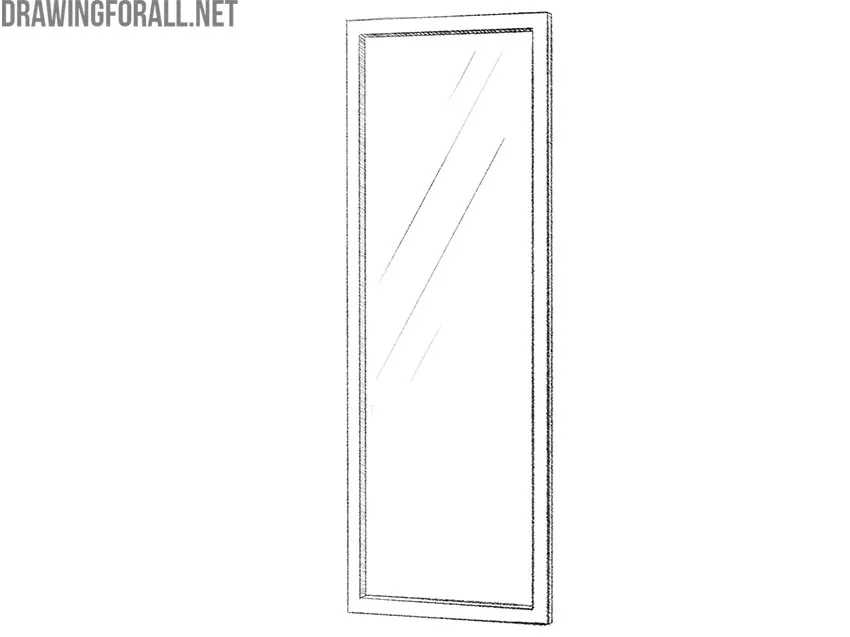
How to Draw a Mirror Step-by-Step
Step 1: Draw the side edges of the mirror
First, draw two parallel vertical lines like in our example. Try not to use any auxiliary tools to create straight lines. Using these two simple lines you should define the side edges of the mirror and position the object on the paper. To make the mirror drawing look more realistic, draw the line closer to us darker than the line further away from us convey the effect aerial perspective.
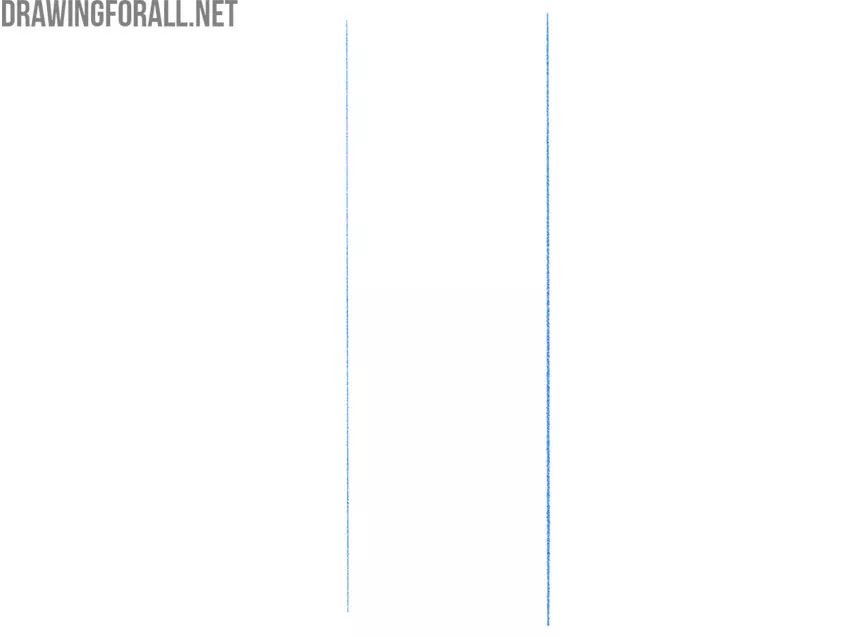
Step 2: Draw the top and bottom edges of the mirror
After that, connect these vertical lines using two horizontal lines. The lower line is more oblique than the upper one, however, the upper one is also located at a slight angle. At this step you can enhance the effect of aerial perspective making the lines of the top and bottom edger thicker and darker as they get closer to us.
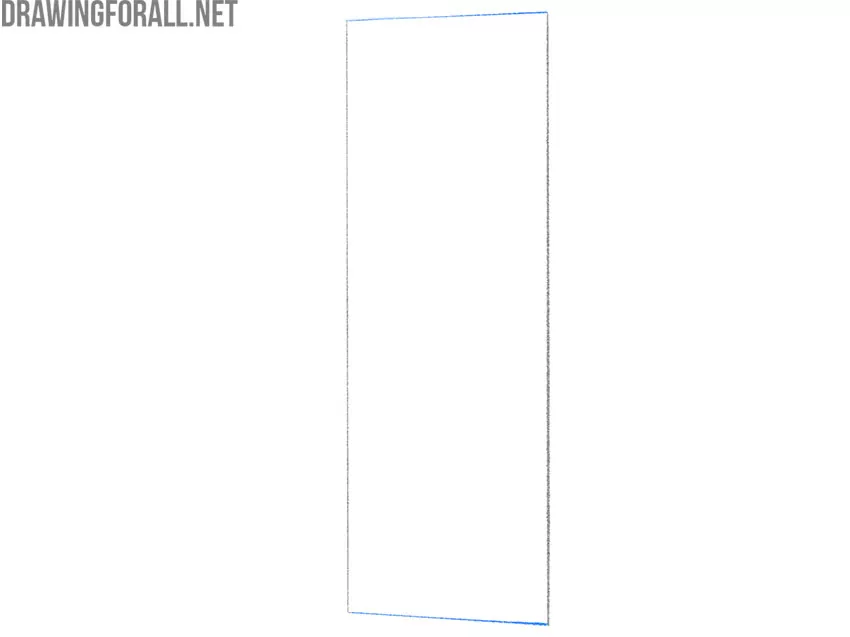
Step 3: Add the side frame lines
This will be a really simple step. Add two vertical lines that are parallel to the lines from the first step. Drawing lines without a ruler will greatly improve your skill as an artist. Just as in the first step, draw the lines closer to us darker than the line further away from us. Additionally, make the part of the frame that is closer slightly thicker than the part that is further away.
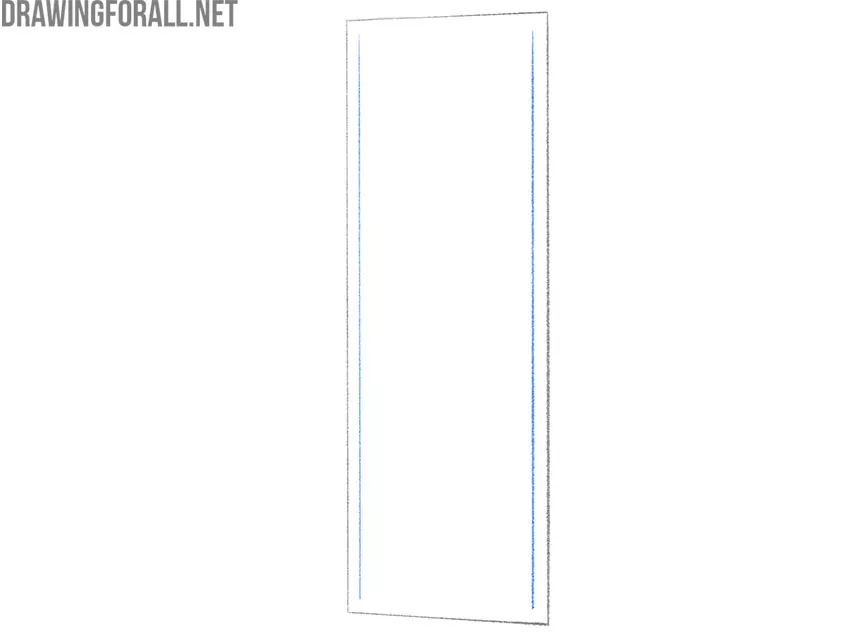
Step 4: Add the top and bottom frame lines
In this step, we will finish drawing the basic outlines of our mirror. Draw two more lines that will be parallel to the lines from the second step. Follow the example of how you did in the second stage and make the lines thicker and darker as they get closer to us. Additionally, make the top and bottom frames slightly thicker as they get closer to the viewer.
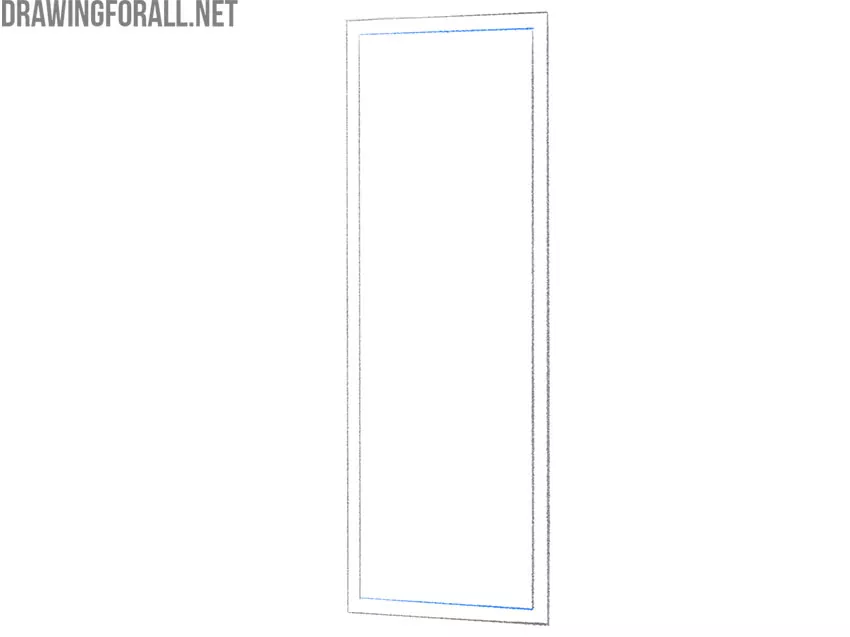
Step 5: Add depth to the frame
Now we will work with the details, this is also very important. Add two more horizontal and one vertical line, which will create a volume effect. The distance between the lines is a critical thing in these steps. This is the way how you can illustrate the thickness and volume of the mirror.
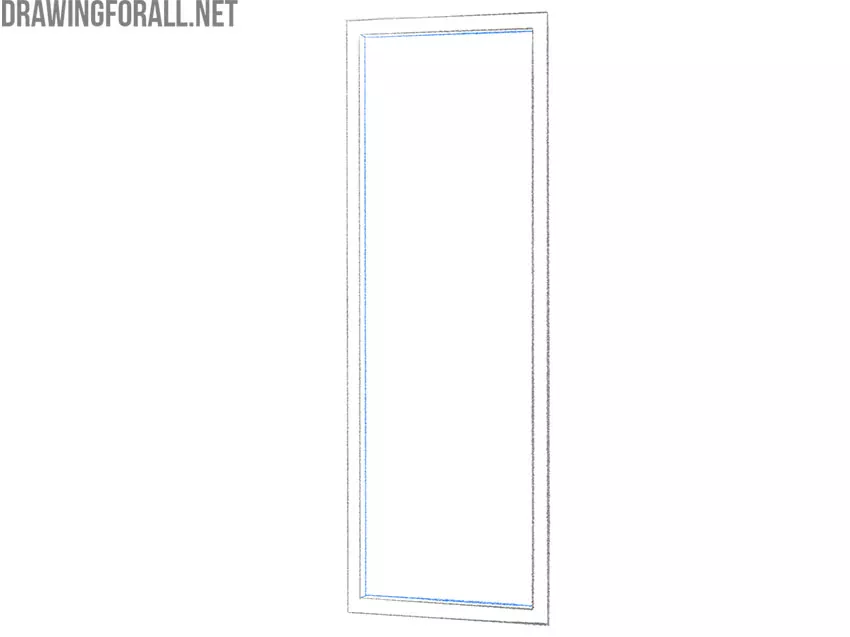
Step 6: Draw the mirror side face
Add another long vertical line and connect it with two short strokes to the main outline. Ideally, it should look like a 3D figure. In this tutorial we follow the example the principles we used to draw a cube. Using different edges and faces we create a fully three-dimensional object on a two-dimensional surface.
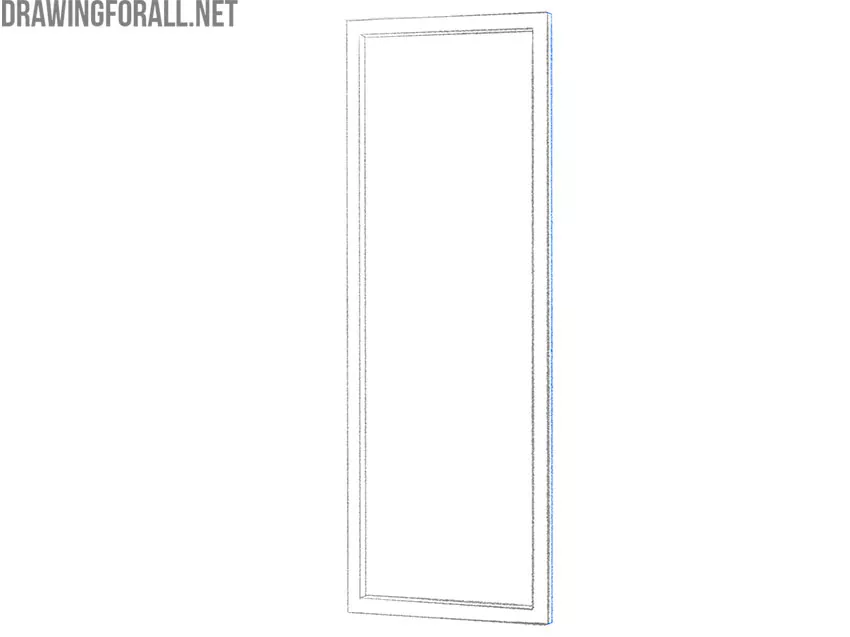
Step 7: Add shadows and highlights
Check the actions of all previous steps. Evaluate the parallelism of the lines of our mirror. Correct any inaccuracies if you find them. After that, add a small shading to the inner frames of the mirror and a couple of oblique lines to the mirror itself.
Remove extra lines from the entire mirror design. Check again the accuracy and correctness of the lines of each step.
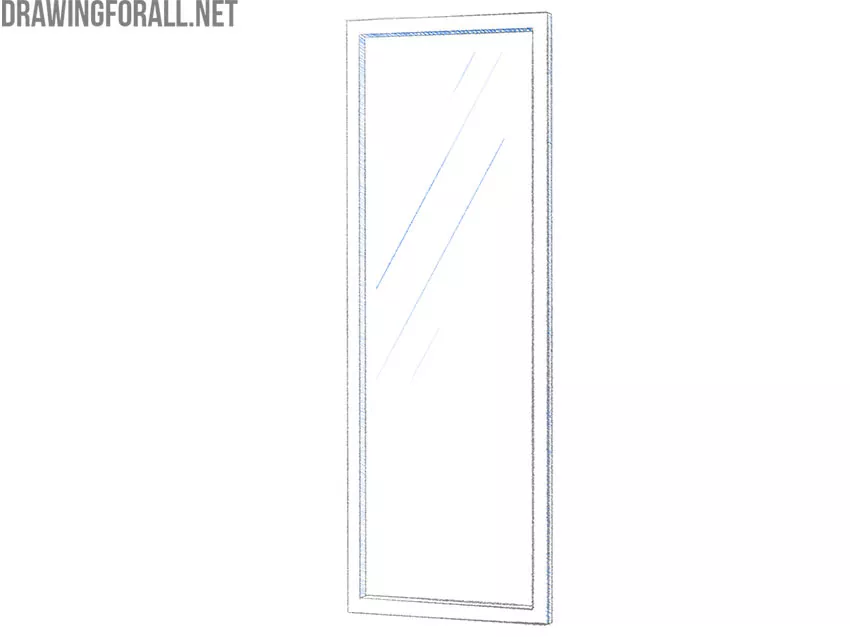
Mirrors play a very important role in fine art and we can often see them in different paintings. In portraits, especially from the Renaissance, a mirror can hint at the reflection of the individual, the state of mind, questions of identity. In religious and moral painting, a mirror often denotes vanity or narcissism.
For example, in the painting by Jan van Eyck, “Arnolfini Portrait” the mirror in the center of the composition reflects the scene behind and symbolizes the presence of a witness. In many other paintings, the mirror can reflect the artist himself working on the painting, thus breaking the fourth scene.
You can get closer to the masters and classics and can study in detail how reflections work in fine art and try to create a full-fledged complex composition with a person standing at the mirror and looking at his reflection.
You can make this drawing more complex if you get a great result. Inside the outline of the mirror you can draw a face or any other object.
You can also try drawing it from a different angle. In any case, the more you practice drawing, the better your skills will become. Therefore, we are waiting for you on the pages of our website!


Thank you for explaining with details to draw it! Now I can draw things in the mirror and it can look 3d!!!!!